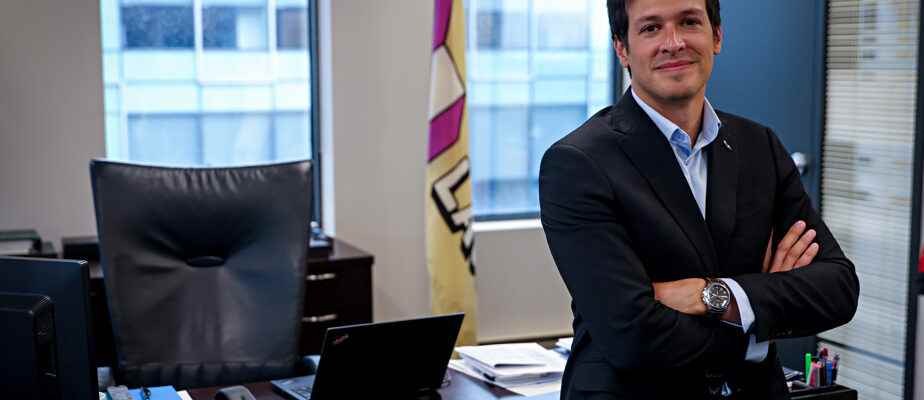Could we possibly consider “car-free neighborhoods” in Laval? This is the “bold” postulate made by Mayor Stéphane Boyer, in a new book which will be published in the coming days. The idea is not to wage “war on the car”, but above all to leave more room for active transport, says the elected official.
Posted at 5:00 a.m.
“By rethinking how we develop our neighborhoods, we could reclaim the space taken up by local roads and car infrastructure. […] All our trips within the same neighborhood could thus be done on foot in just a few minutes,” writes Mr. Boyer in his essay, which The Press obtained, and which will be published by Éditions Somme Tout on September 13th.
At the end of the line, the 34-year-old mayor specifies that he started writing his book several years ago. “It’s not related to the electoral context, but my objective remains to generate ideas, and to debate. The more people who talk about it, the better it will be,” he says. According to him, the very presence of the car in the city “comes with several economic, social and environmental problems”, especially since the infrastructures “are more and more expensive to build and maintain”.
He worries about what he calls “a diminishing sense of community in the city”. “We have to fix it,” he reasoned.
The idea is not to undo the existing neighborhoods to remove all the streets. On the other hand, in the large spaces that remain to be developed in Laval, one can very well imagine a renewed approach, with neighborhoods without cars.
Stéphane Boyer, Mayor of Laval
“We have to ask ourselves the question: do we need cars to go from one neighborhood to another, or from one building to another? At the moment, we are trying to connect all the buildings by a street, but it wouldn’t be more logical for the neighborhoods to be connected by streets, but for people to walk or walk inside them. bike ? It would be a major paradigm shift, which we are already seeing in Europe, for example,” continues Mr. Boyer.
But the challenge is great, he admits. Last year, there were approximately 250,000 cars and light trucks in Laval. In its 2021 Sustainable Mobility Plan, the City noted, however, that “the number of solo car kilometers traveled by a resident of the central part of Laval is approximately 30% lower than that of a person who lives in traditional neighborhoods made up of residences single family”.
The “one-size-fits-all” discourse trap
It is the mayor of Quebec, Bruno Marchand, who signs the preface to the new book by the mayor of Laval. In particular, he affirms that “cities which will courageously agree to seek innovative ideas, which will give themselves the space to discuss them with their citizens […] and who agree to question their certainties will definitely have a significant head start” over other municipalities.

IMAGE PROVIDED BY SOMME ALL EDITIONS
“In the reasons that water down the debate [de l’aménagement du territoire], there is also the fear of the single model. As if questioning the city of the future implied, as one and only solution, living in a 60-storey condo tower in a hyper-densified place. I am of the opinion that the single solution will not solve all our problems. The living environments will have to offer different proposals in order to meet various needs,” also insists Mr. Marchand.
Stéphane Boyer is going in the same direction. “People should not see my book or my ideas as an affront to the current way of life. That’s not it at all. It’s another way of thinking about the city,” he explains. At the same time, he adds that the development of car-free neighborhoods “comes with several considerations”. “In fact, it’s almost impossible to eliminate all vehicular traffic in a neighborhood, even for emergency vehicles. A car-free neighborhood will allow access to automobiles in certain circumstances,” he says.
“Ultimately, the people who choose to live in these new neighborhoods will be the people who agree with the idea. So that won’t prevent Monsieur and Madame Tout-le-Monde from continuing to live according to their daily lives. What is important is to have a healthy debate, without confrontation,” insists Mr. Boyer.
“I wish us to avoid the trap of a single vision. A single solution will never meet all needs. A city should offer alternatives, different models in order to respond to diverse realities,” continues Bruno Marchand.
Learn more
-
- 60,000
- Approximate number of parking spaces in downtown Laval. In July, the Boyer administration announced the adoption of new urban planning regulations making way for more greening and fewer parking lots. No new service stations will henceforth be authorized under this regulation.
source: city of Laval

